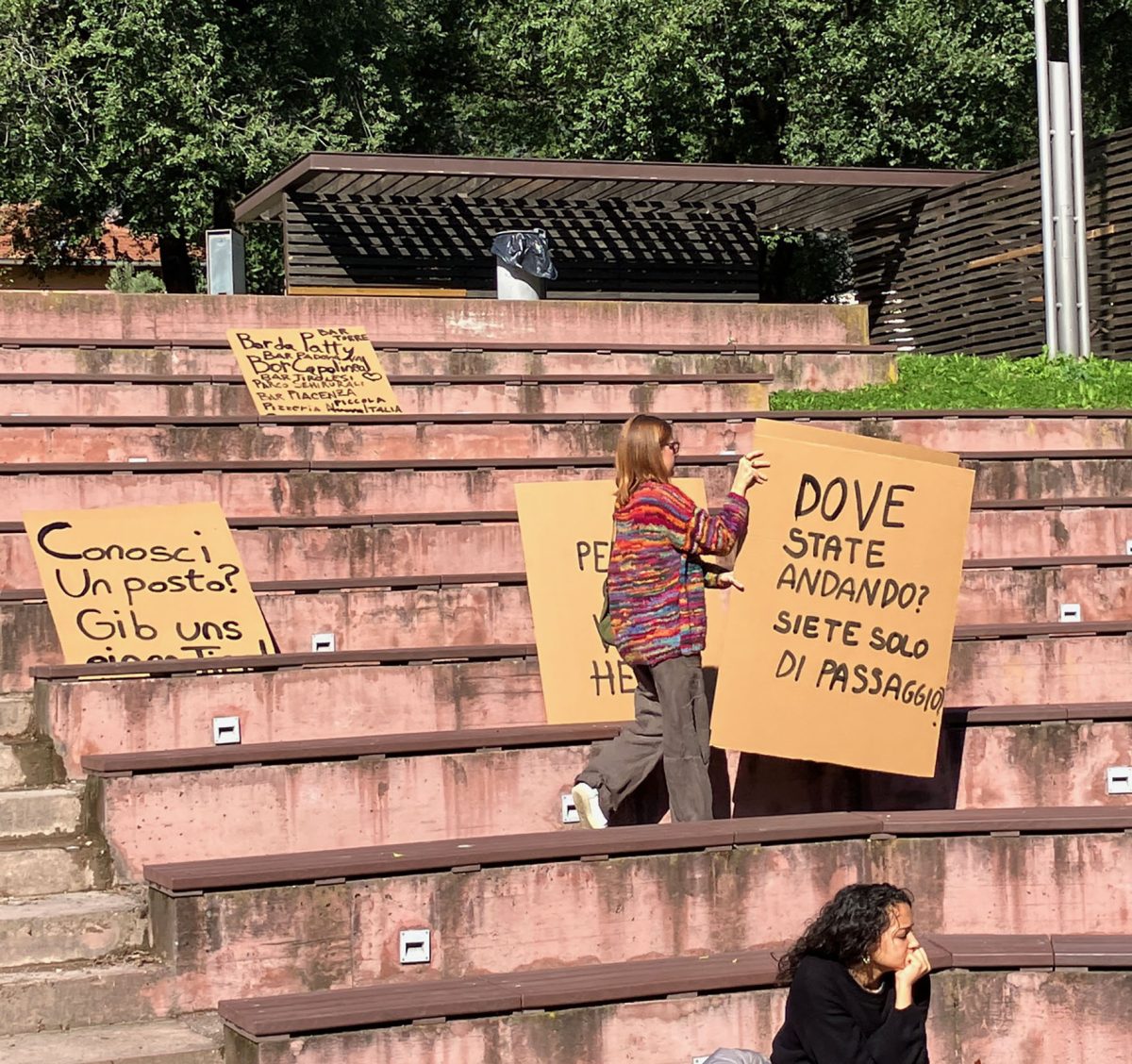Exhibition of Project 1 – Master of Eco-Social Design during the GOG – Gäste Ospiti Guests
Where: Faculty of Design and Art, 4th floor, F Building
When: Friday, 26.01 (from18) opening / Saturday, 27.01 (11–17)
The Faculty of Design and Art opens its doors by presenting the semester projects of its courses.
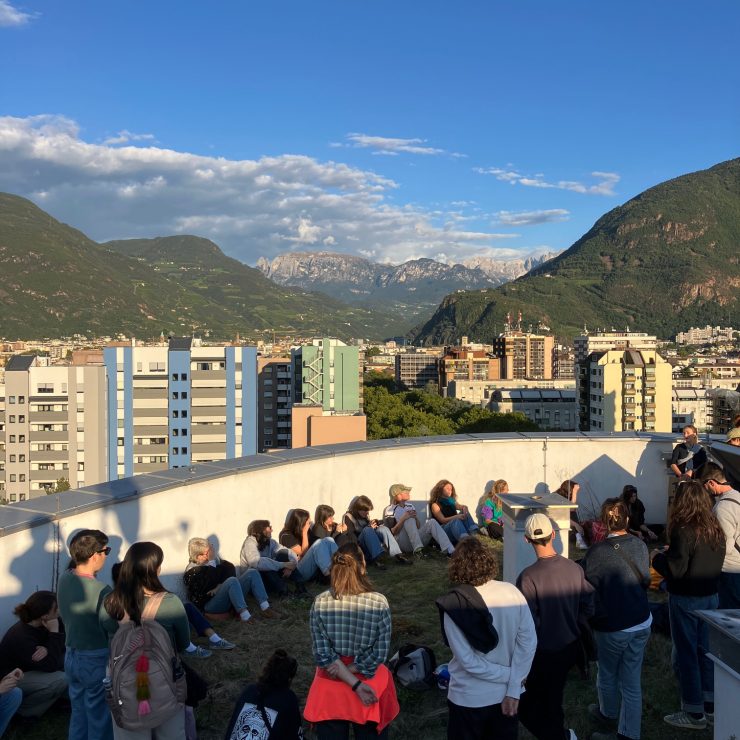
Winter Semester 24/25 – Project 1
Exploring borders at multiple scales as dynamic spaces of transformation, the course examined their impact on social and ecological systems and reimagined them as intersections where disciplines, ideas, and practices converge. Students were encouraged to trespass, explore, and map these boundaries, charting new territories for design and collaboration.
The course was divided into three phases. In the first phase, Situating Us and Learning from Each Other, the students engaged with the Don Bosco neighborhood, conducted on-site research, and created a temporary exhibition at La Rotonda (in collaboration with our partner Officina Vispa).
In the second phase, Eco-Social Design: Exploring Methods, Concepts, and Tools, the group developed the collective research tool “Visual Lexicon.”
In the third phase, Towards Practice, the students worked in eleven groups on projects that, building on their research, tested real interventions in the context of the city of Bolzano.
Teaching team: Jacopo Ammendola (Practitioner and Researcher; Sustainability-oriented spatial design), Angelika Burtscher (Cultural Producer and Designer; Transformative Communication Spaces), Sonia Matos (Transformation-engaged Design Research)
Students: Louisa Monte Alegre, Florentina Abendstein, Emma Laura Baylon Ibarra, Tjorven Merit Bertolatus, Greta Cazzanelli, Olivia Conti, Emanuela Annadesideria De Nitto, Elisa Di Rocco, Clara Dolder, Sharon Dor, Linda Enrich, Konrad Ruben Freyer, Anna Graziani, Anna Ruth Kaufmann, Shirin Kiefer, Helene Maria Oceana Kunze, Jelke Maria Harmine Meyer, Nikola Mrkobrad, Malin Paucke, Cemre Oeztuerk, Alice Peruzzo, Adela Raskova, Charlotte Redonnet, Pia Doreen Rehwald, Finn Reutter, Pietro Rista, Irma Ruiz Velasco Monroy, Julia Caroline Tebbe, Isolde Vadalà, Liselotte Michelle Van Beveren, Greta Wagner-Görmar, Vanessa Wahls, Alice Jade Yorke
Projects:
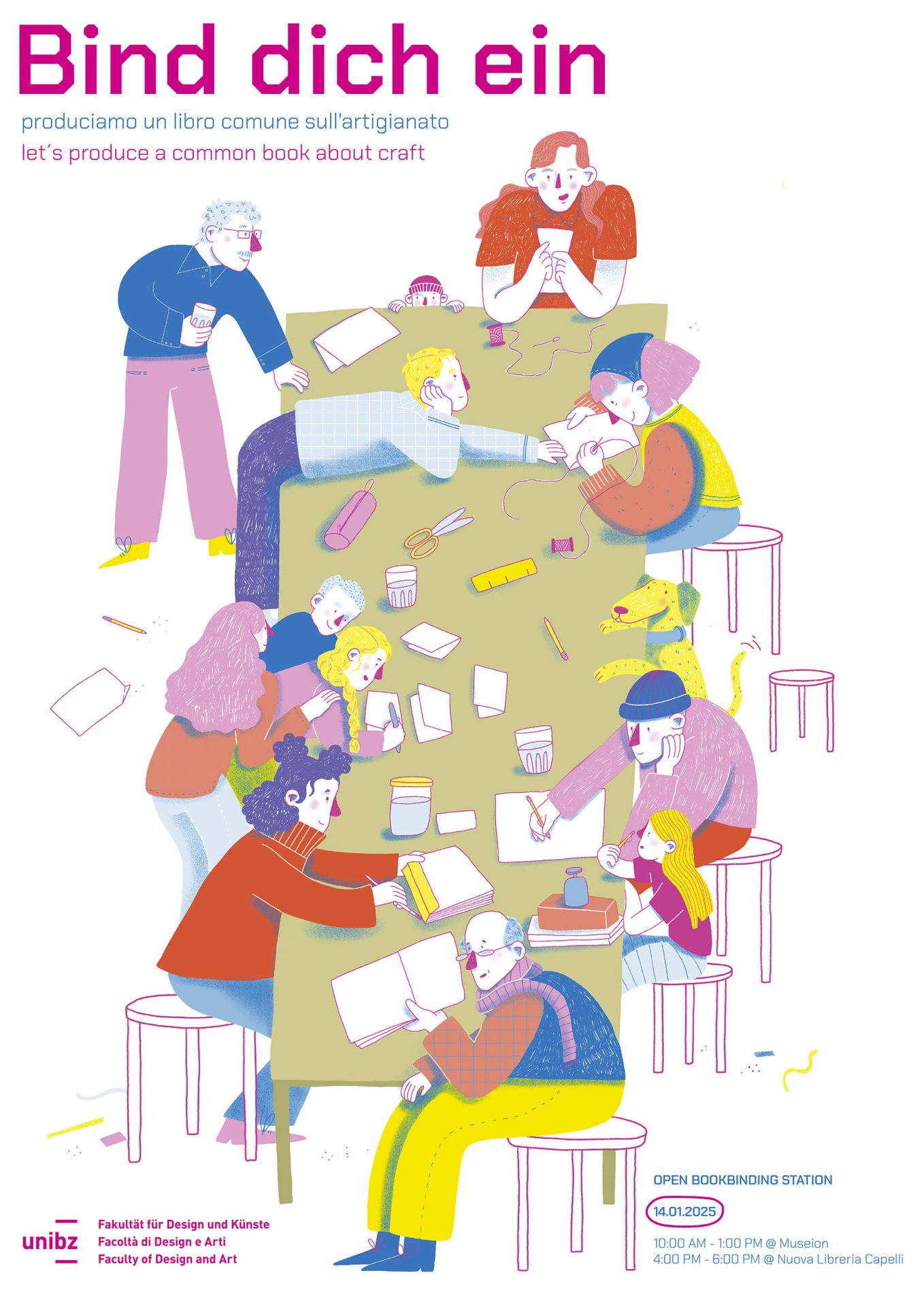
Bind dich ein
Let’s produce a common book about crafts
Students: Linda Enrich, Helene Maria Oceana Kunze, Jelke Maria Harmine Meyer, Malin Paucke
“Bind dich ein” is a mobile bookbinding station that offers people the opportunity to become part of a common book, aiming to bring people together through the shared experience of hands-on crafting. The station uses leftover materials like old posters and paper scraps, encouraging participants to explore diverse bookbinding techniques while fostering creative freedom and space for conversations. Guiding questions are used as a tool for reflecting experiences and discussing various dimensions of crafting.
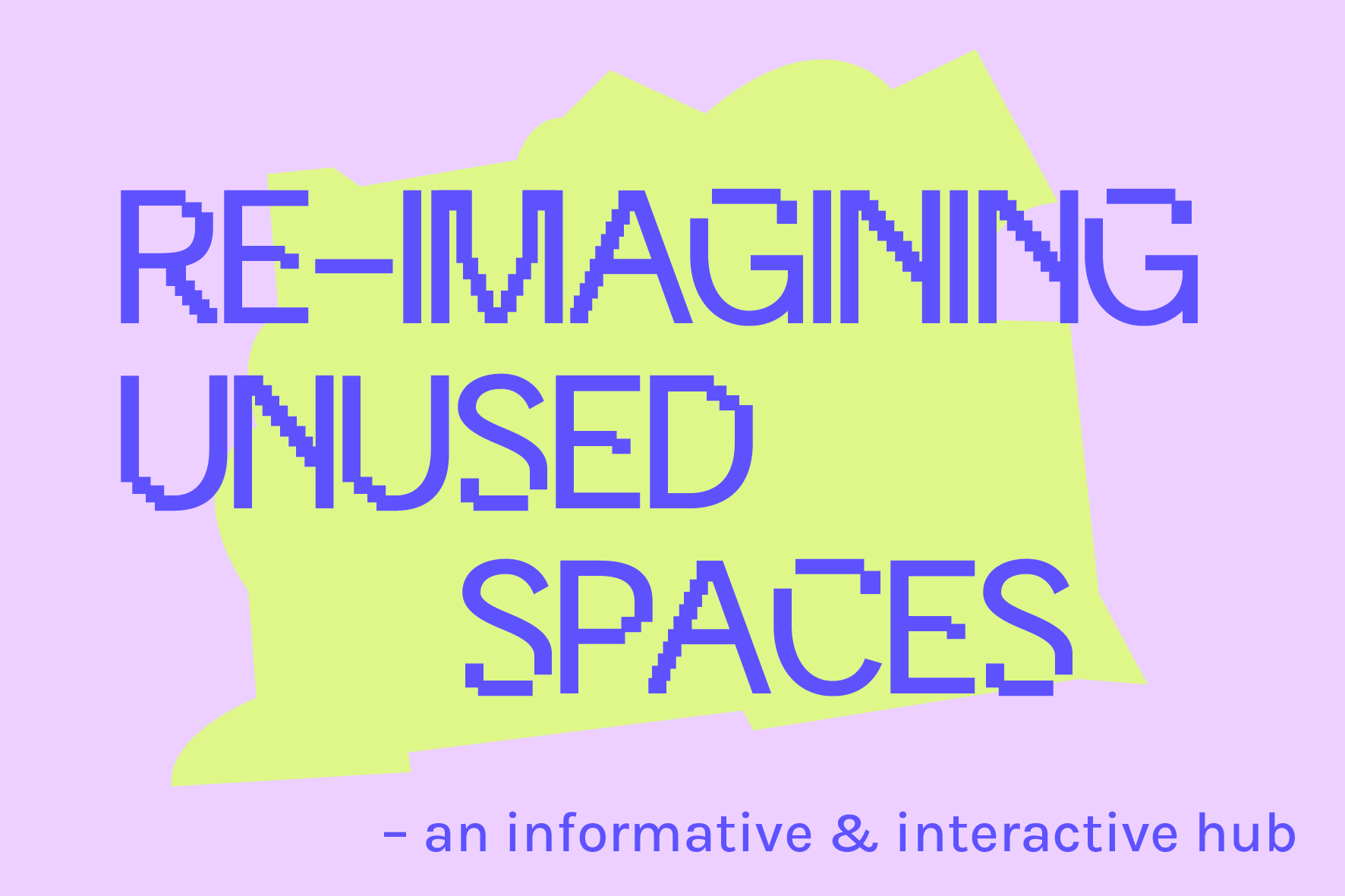
RE-IMAGINING UNUSED SPACES
Students: Greta Cazzanelli, Greta Wagner-Görmar,
Clara Dolder, Julia Caroline Tebbe
Unused spaces are more than empty buildings—they represent untapped potential for connection, creativity, and community. In Bolzano, a shortage of collaborative spaces is compounded by strict regulations, complex processes, and limited dialogue between citizens and the municipality. Many remain unaware of these spaces, their potential, or how to advocate for change, conserving their underutilization. This neglect has social and ecological costs, wasting resources and opportunities. Our project seeks to bridge this gap by creating a hub for awareness, dialogue and action, encouraging a collaborative imagination. The long-term idea isn’t just to inform but to inspire action—a collective rethinking of the spaces around us.
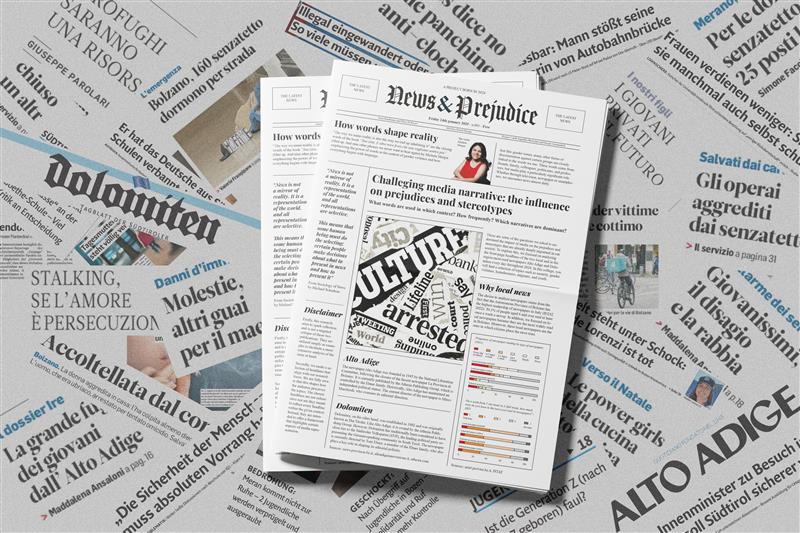
How words shape reality
The influence of news on prejudices
Students: Anna Ruth Kaufmann, Elisa Di Rocco
How do news shape reality? This question guided our analysis of the most-read local newspapers in the region, Alto Adige and Dolomiten. Our installation presents the results of this research, highlighting words, articles, and images related to key topics such as security, migration, gender violence, youth, and homelessness. Visitors are invited to create a new narrative on a blank newspaper front page, offering alternative contexts and perspectives for these groups. This interactive approach encourages reflection on how news content is typically framed and its impact on readers’ perceptions. By doing so, we aim to make the influence of news narratives on societal prejudices visible and open to discussion.
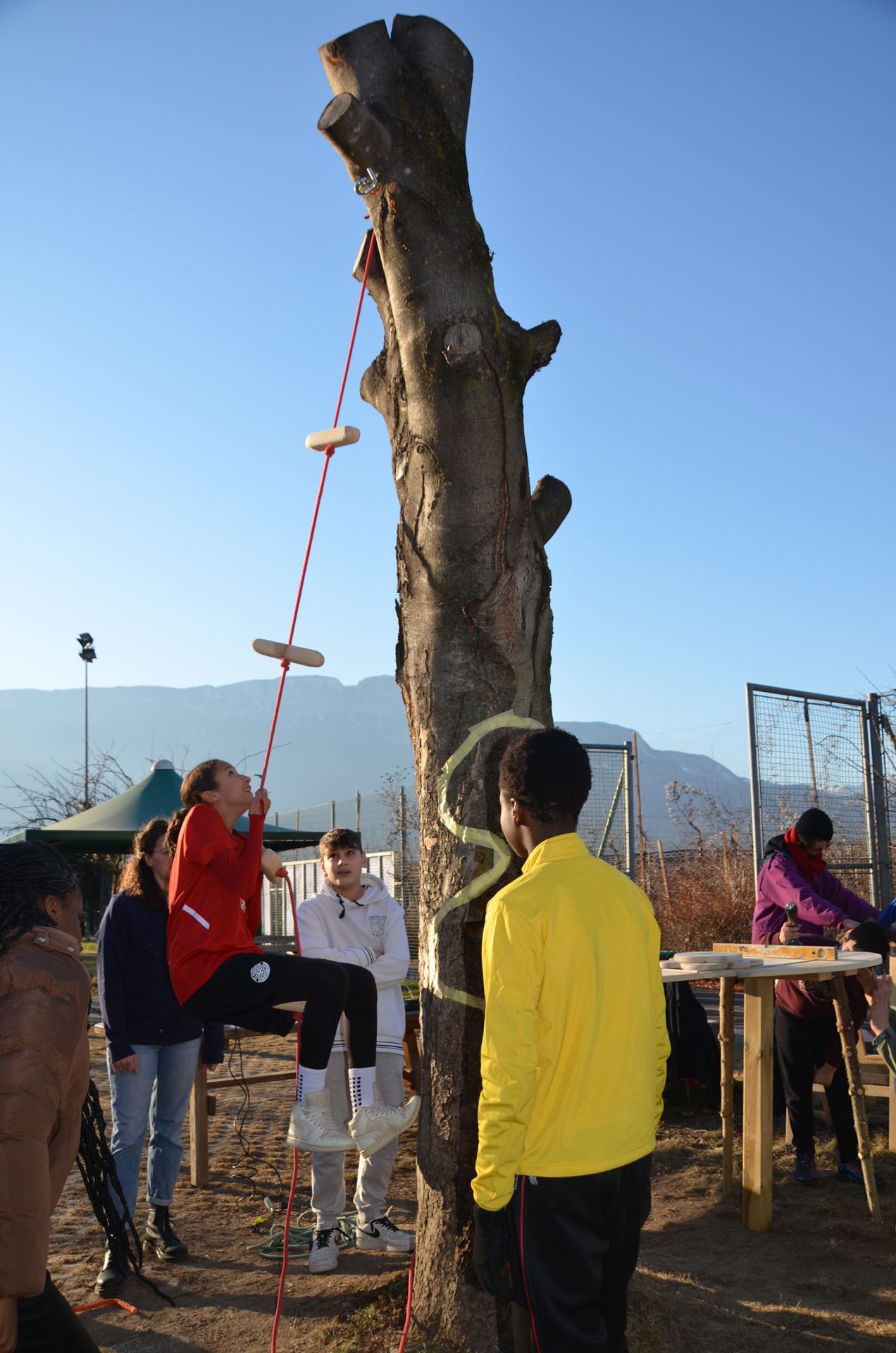
Monkey Tree – Albero Scimmia
Students: Konrad Ruben Freyer, Olivia Conti, Emanuela Annadesideria De Nitto, Nikola Mrkobrad
This project is the result of a collaboration with Villa delle Rose, a youth organization based in Don Bosco. We proposed to organize a workshop in their space, focusing on co-design and hands-on creation. Our main goal was to involve the participants (age ca. 7–15) in a process of shaping their environment by themselves.
Through conversations with the educators, we quickly learned that their mission is to provide an alternative experience to the everyday school and home environment, where the children too often get told that they are not enough. In contrast, Villa is a place free of judgment and instead a space of support and encouragement. We incorporated this attitude as best as we could into our process, aiming to value every contribution from the participants of our workshop: The first day was a collective design session where we gathered ideas and drawings from the children. The remaining two days were dedicated to building what the group envisioned. The children’s ideas, skills, and interests significantly shaped both the form and aesthetic of the final result. On the evening of the final workshop day, we organized an aperitivo by a fire with the educators and some of the children.
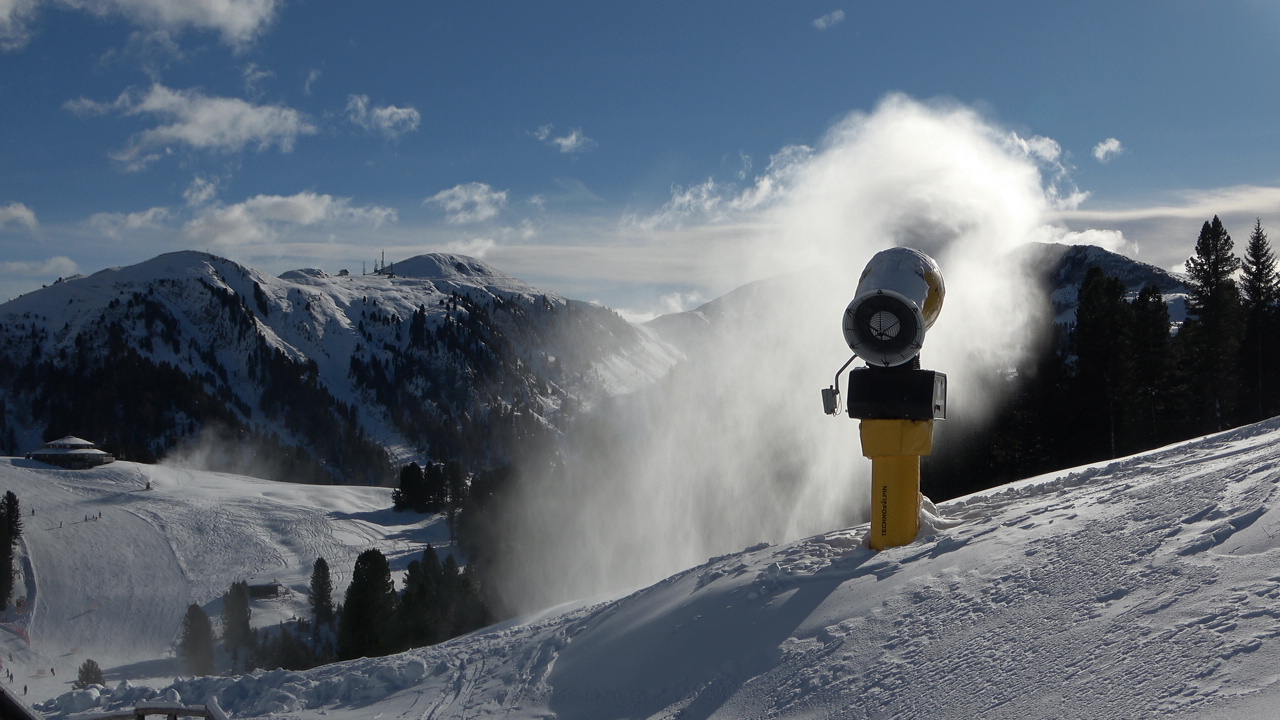
DOLOMITI SUPER SOUNDS
Do you hear the biosphere?
Students: Louisa Monte Alegre, Tjorven Merit Bertolatus
Downhill skiing, the popular and important winter activity in mountain areas, functions as an example for the conflict of having an unnatural natural experience. This project depicts the human-nature-relationship through an immersive sound-video installation to reactivate people’s sensitivity to ecosystems, specifically in mountain areas. The context is a popular skiing area in South Tyrol, that is documented visually and auditory within the installation. Two video projections are installed in a darkened room combined with mechanic skiing sounds played by speakers to recreate the artificial skiing experience. In addition, visitors can put on headphones with contrasting natural sounds. This experience is supplemented by the visualization of biodiversity data of South Tyrolean mountain areas.
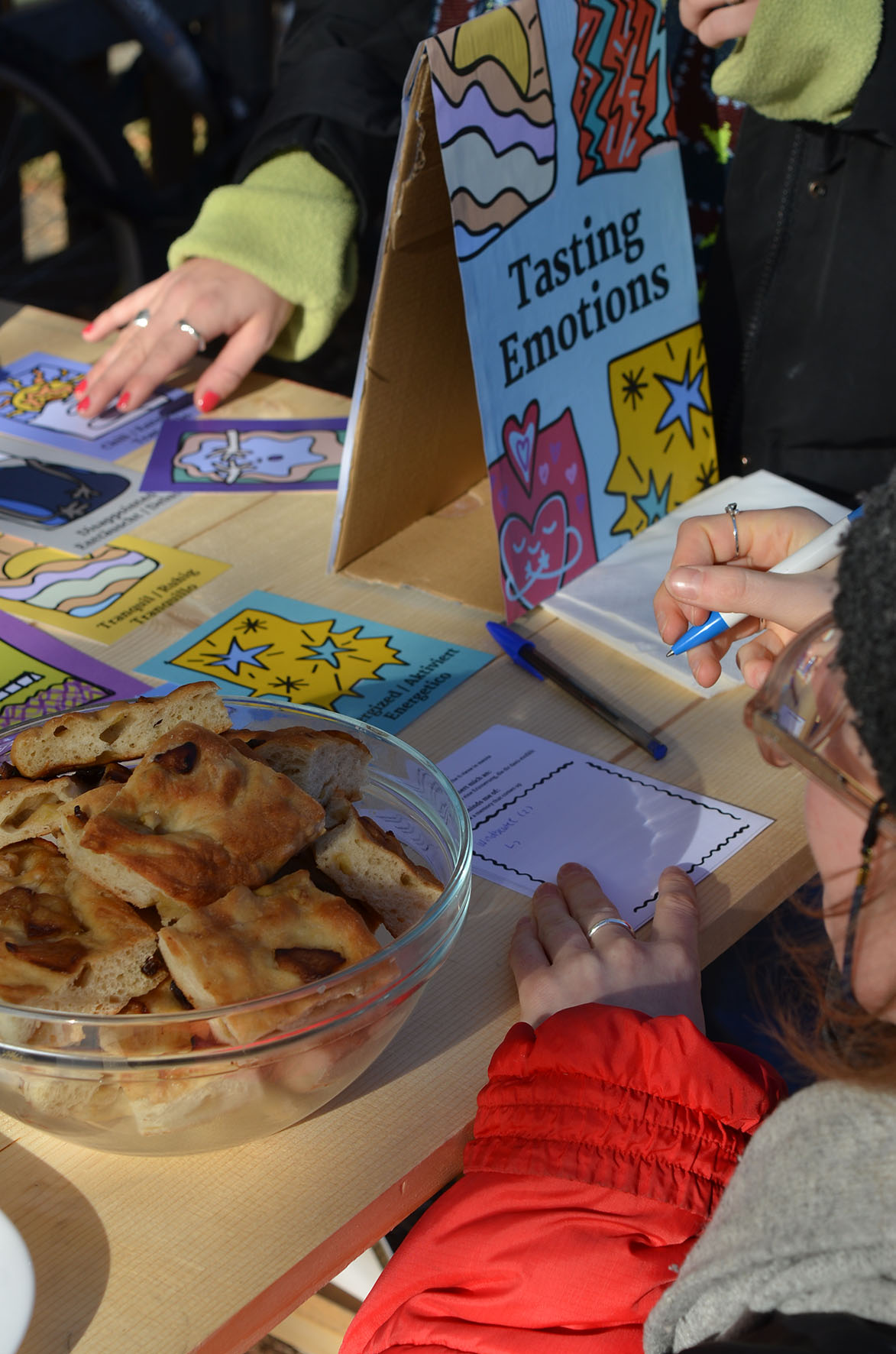
Tasting emotions
Students: Florentina Abendstein, Alice Peruzzo,
Charlotte Redonnet, Irma Ruiz Velasco Monroy
Food has a much larger effect on us than just keeping our organism alive – It shapes us and the way we understand our world. With our project Tasting Emotions our aim lies in creating tools and settings to bring more consciousness to the multiple layers that constitute our daily meals.
We took taste as our mediator to ask and collectively explore two powerful aspects of consuming food: Taste as storytelling - How do taste and emotions/memories relate? Conscious consumption - What drives our food choices?
For our research we created and brought dishes with a twist to the streets of Bolzano collecting stories awakened by the tastes. In our workshop at Casa Goethe exploring what leads to our desires and choices of food. Our lexicon as well as our card set should serve anyone who is curious to explore and connect in a different way with the ingredients that give us life.
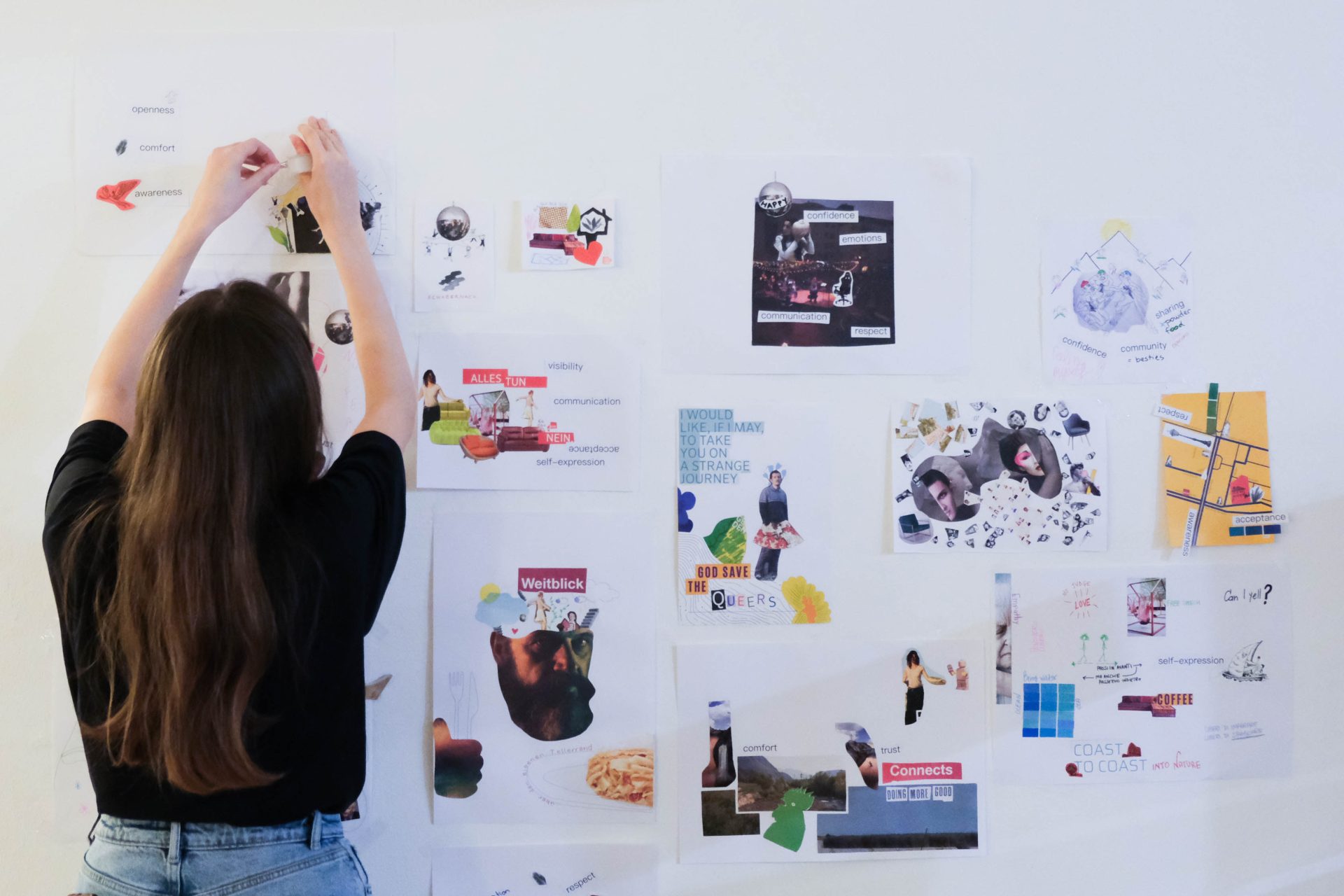
A soft place to land
Where we imagine (public) safer spaces, we begin to build them
Students: Emma Laura Baylon Ibarra, Shirin Kiefer, Pia Doreen Rehwald, Vanessa Wahls
What does it mean to feel safe in public? Safety is experienced differently by individuals based on gender, race, and identity. While some move freely, others face surveillance, exclusion, and discrimination. In our workshop “Oops, Did I Act Like That?”, participants reflected on safety in public spaces, exploring discomfort and marginalization. Through dialogue and collages, they envisioned safer environments.
Building on these insights, “A Safe Place to Land” is an interactive installation guiding visitors through reflection and critique. It examines physical and psychological safety, highlighting disparities faced by different people. Visitors contribute definitions and vote on safety perceptions. The exhibit culminates in a dreamscape—an immersive, stitched-together vision of an inclusive future.
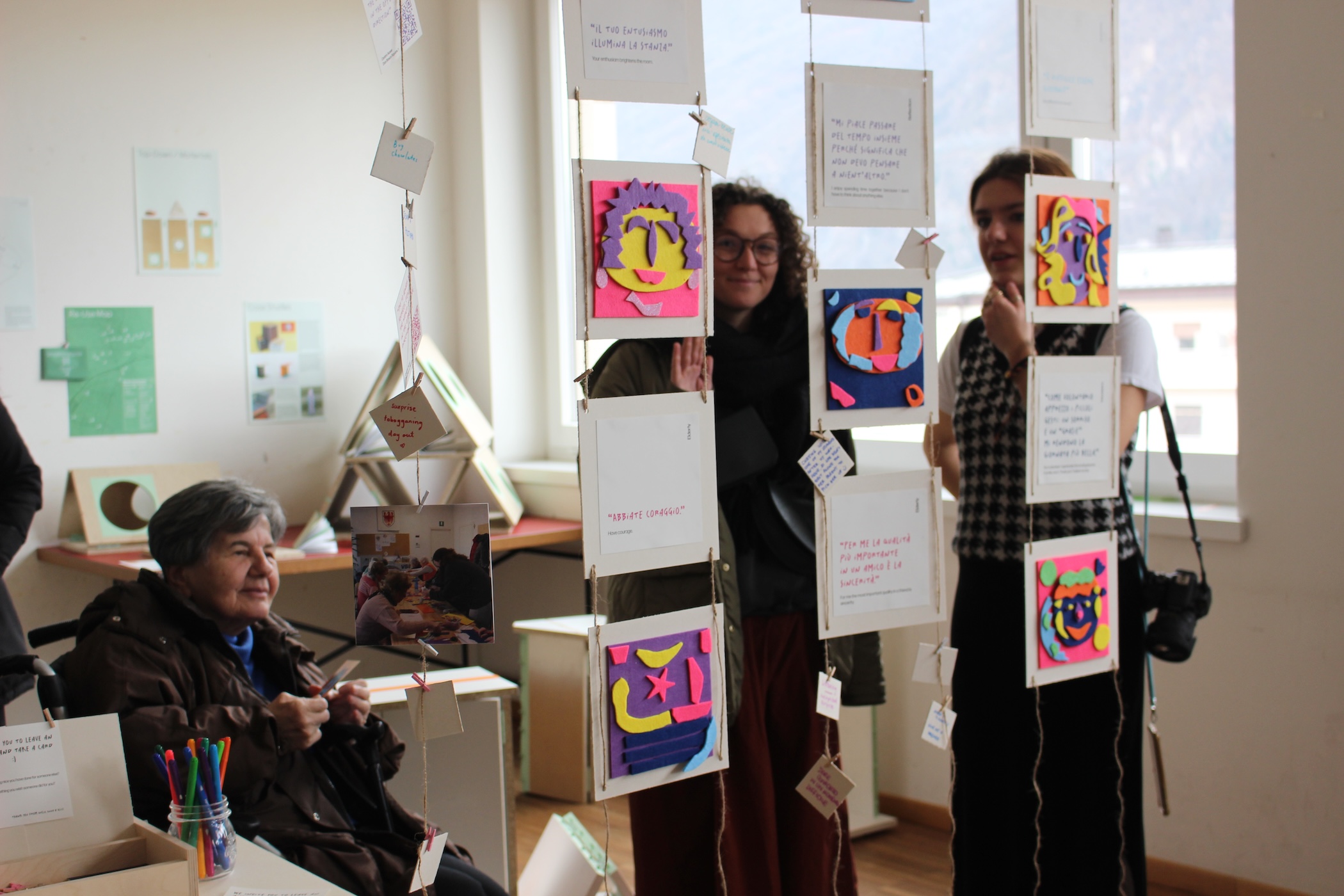
Creativetà
Students: Anna Graziani, Adela Raskova,
Alice Jade Yorke
Aging is highly respected and celebrated in some cultures, yet elderly isolation is a growing issue, impacting mental health and well-being. On the other hand, studies show 16 to 24-year-olds are the most affected by loneliness. To bridge these gaps, we connected these two “isolated” groups across age and language borders to share creative skills. Partnering with the Auser Centre, focused on elderly care and community, we ran four creative workshops culminating in a collaborative art piece. This experience made us wonder why people give their time to help others. Can volunteering foster belonging in a new community? and is the simple presence of others enough to combat isolation and loneliness?
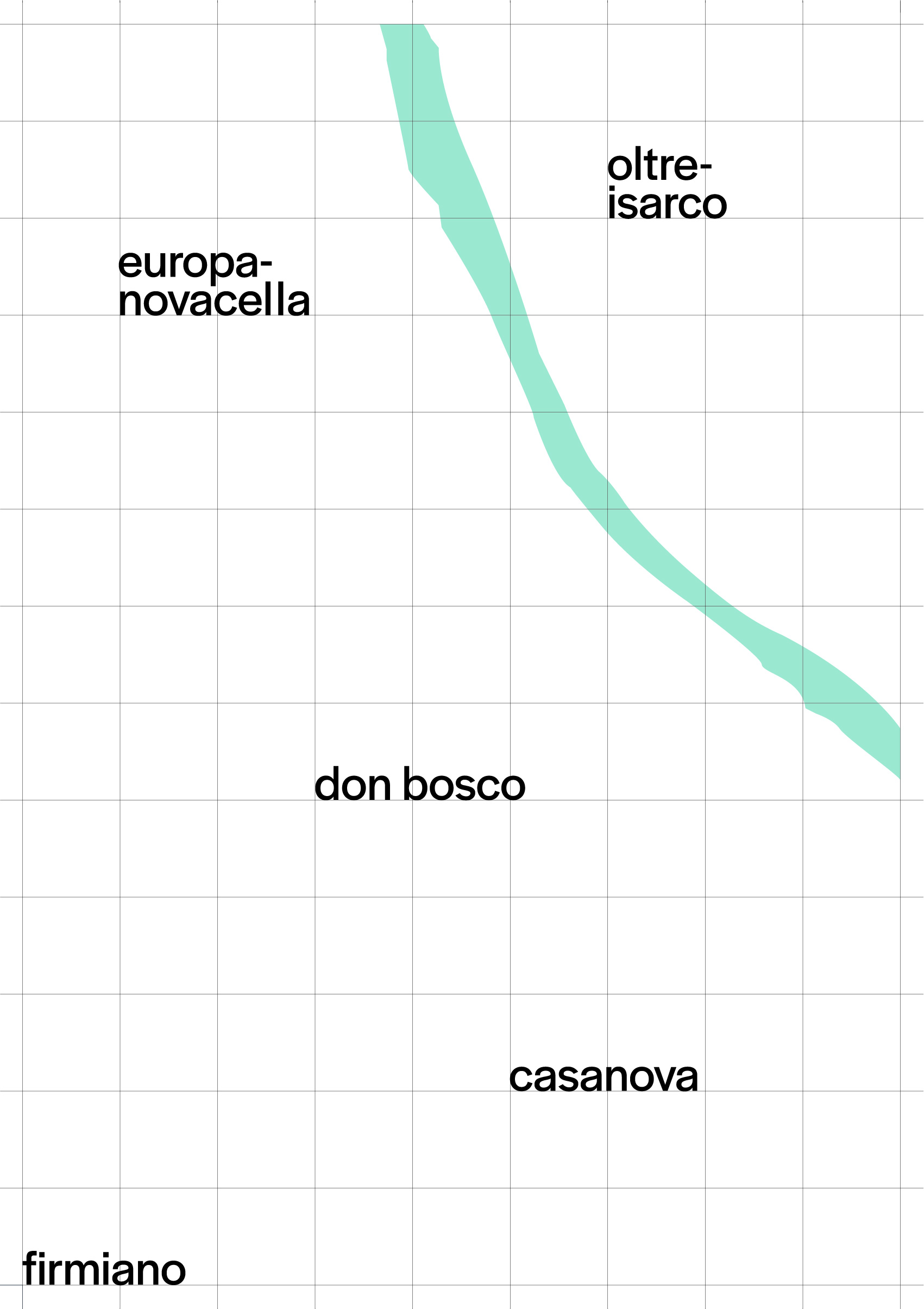
sense of place
Student: Isolde Vadalà
sense of place wishes to open up, be personalized, be inhabited and to contrast the sense of displacement and not belonging. 1) What kind of stories and worlds lie behind the streets of Don Bosco? 2) What would Don Bosco look alike without the people living in it?
Each map represents a point of view of Don Bosco, enriched by personal references with the aim to narrate a different perspective of the neighbourhood. Every places are the result of initiatives and forces starting from the individual to the community level. Never showing the same and one-perspective. The message is to stimulate feelings. How? Seeing the living space with the curious eyes of the tourist, the vigorous ones of the actor and then, the productive ones of the builder.
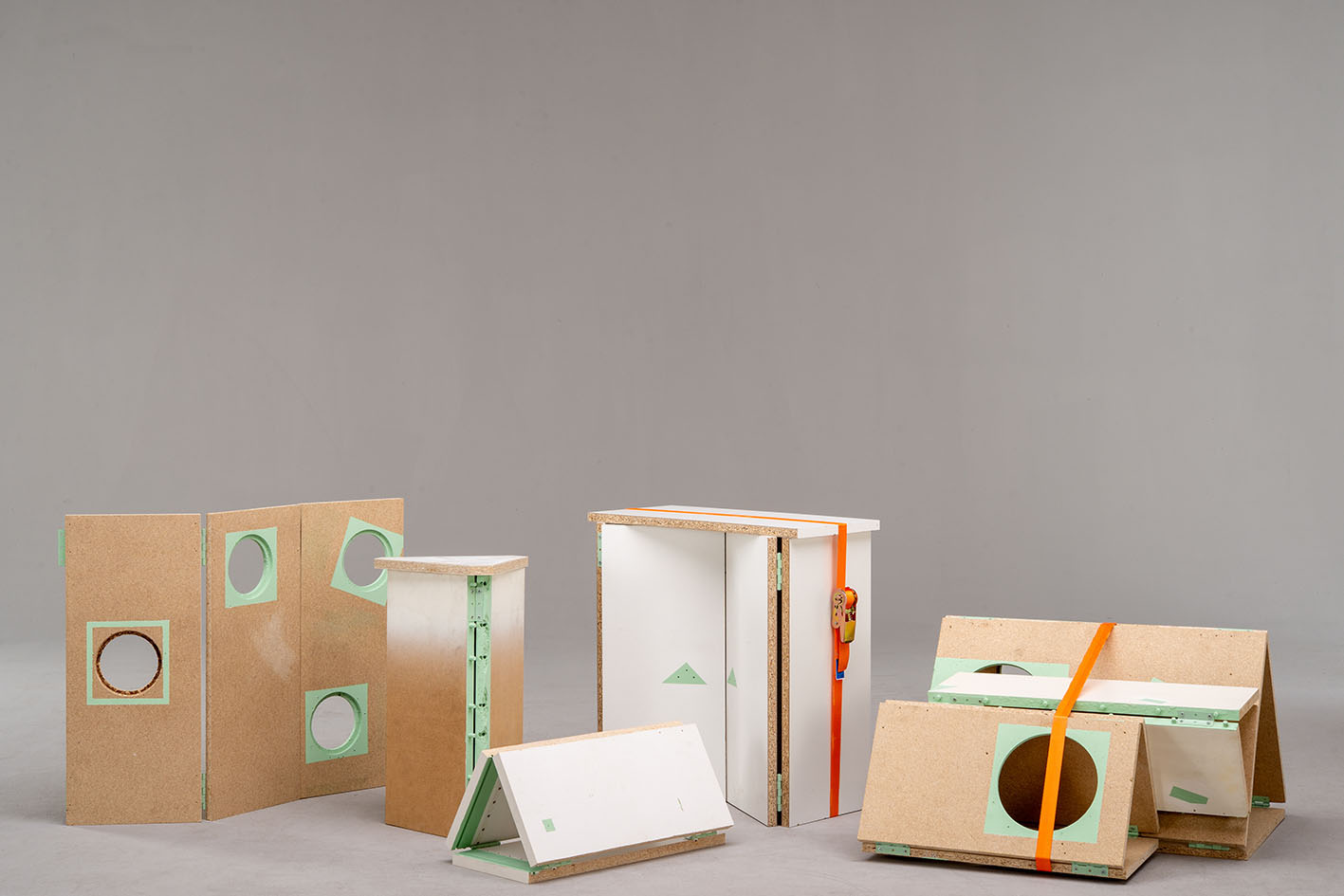
Bulky Particles
Students: Finn Reutter, Pietro Rista, Liselotte Michelle Van Beveren
Material waste is about resources no longer perceived as valuable. This project addresses the topic of material waste and its cultural dimension, with a specific focus on Bolzano.
The aim is to change how people perceive material waste, encouraging them to see it as a resource. By promoting a DIY approach, the project seeks to empower individuals and inspire a sense of gain rather than feelings of loss or guilt.
Starting with an analysis of Bolzano’s context, the project focuses on bulky waste as a category and particleboard as a material, highlighting its potential for reuse.
The guide demonstrates how to create a modular item from particleboard with multiple applications. These objects are simple to make, adaptable to any board dimensions, and accessible for everyone to create.
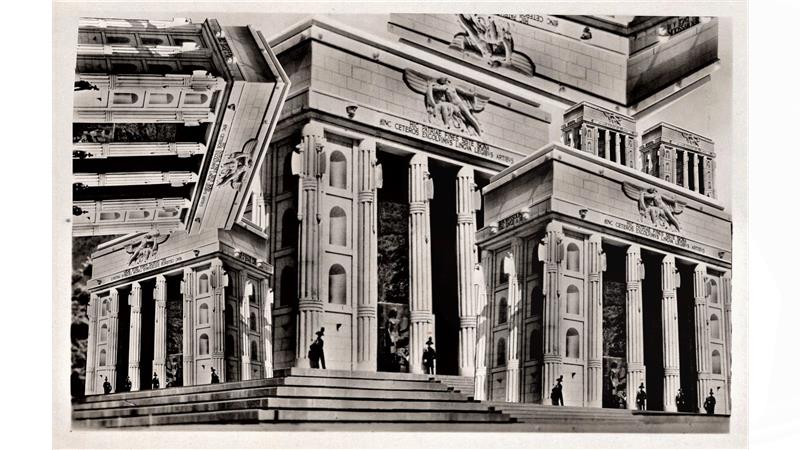
Languages of perception
Students: Sharon Dor, Cemre Oeztuerk
Language helps us navigate social interactions, cultural norms, and human behavior. But what happens when the language around us is unfamiliar, fragmented, or culturally distant?
Our project explores the limits of language and the emotions it provokes. In Bolzano, where German, Italian, and immigrant communities coexist, each group carries unique interpretations of shared spaces and histories. These overlapping perspectives create gaps in understanding when language fails to align, blending the known and unknown into a space ripe for misinterpretation.
This project invites viewers into that space of linguistic limitation, confusion, and partial understanding. Through visual and linguistic elements, we immerse them in the experience of “filling in the gaps,” revealing how assumptions often distort the complexity of others’ stories and emotions.
